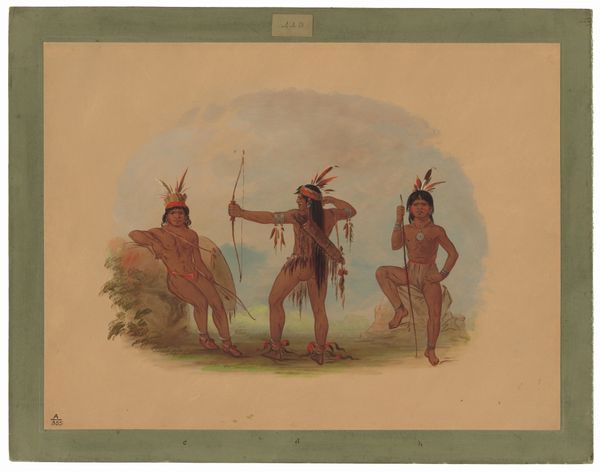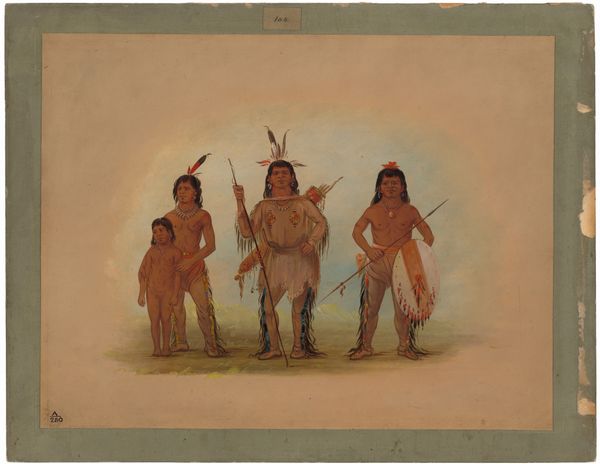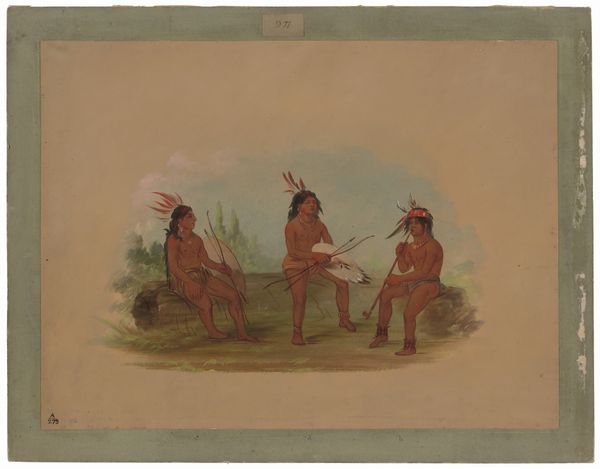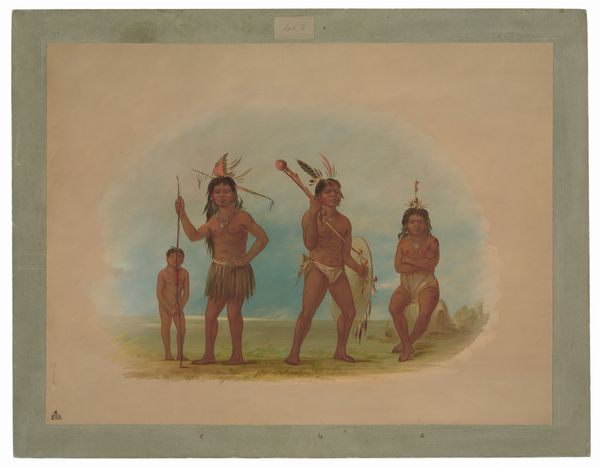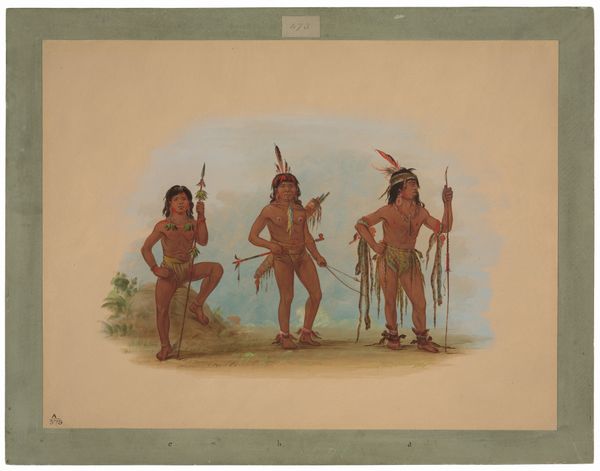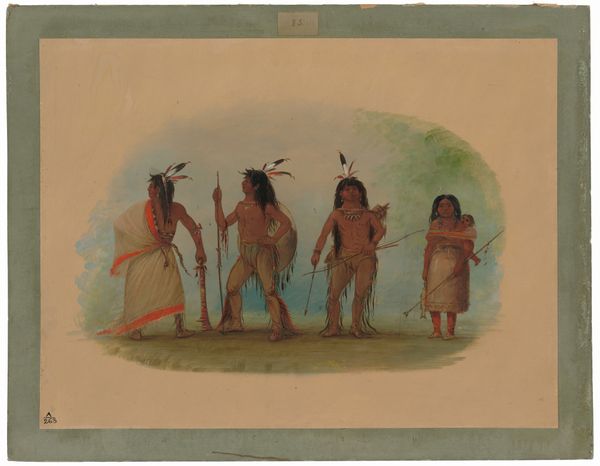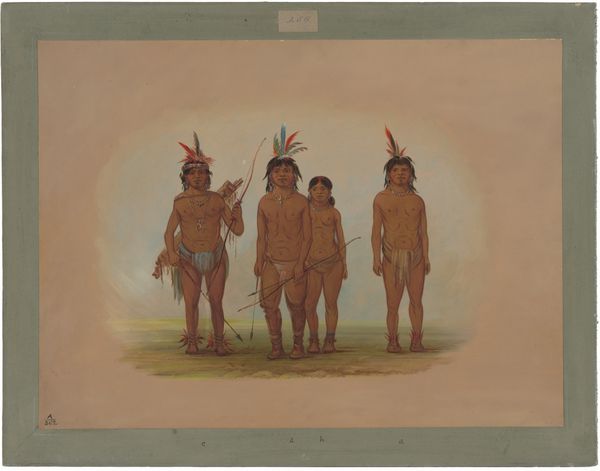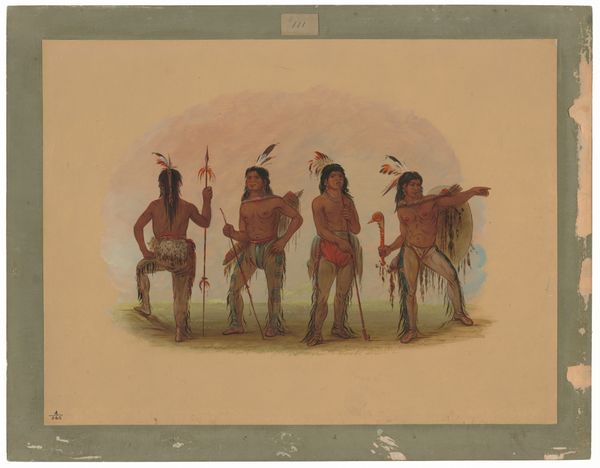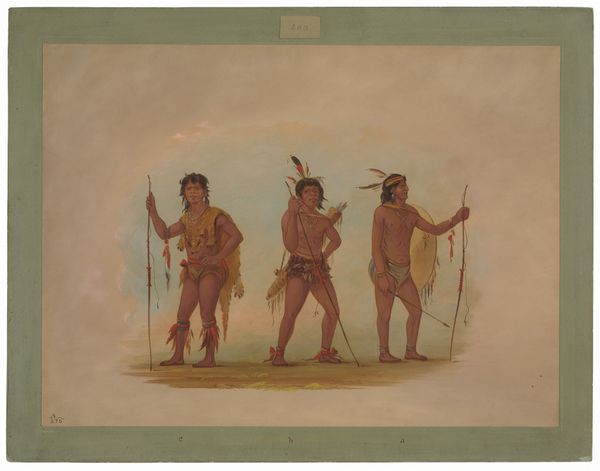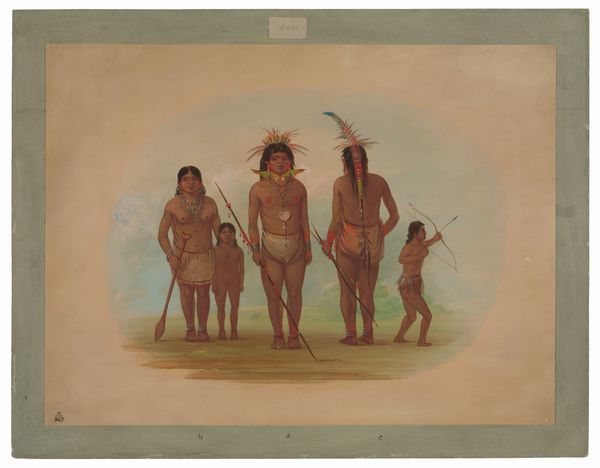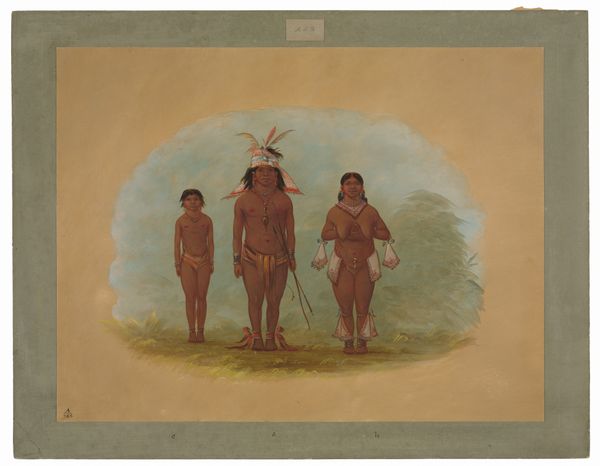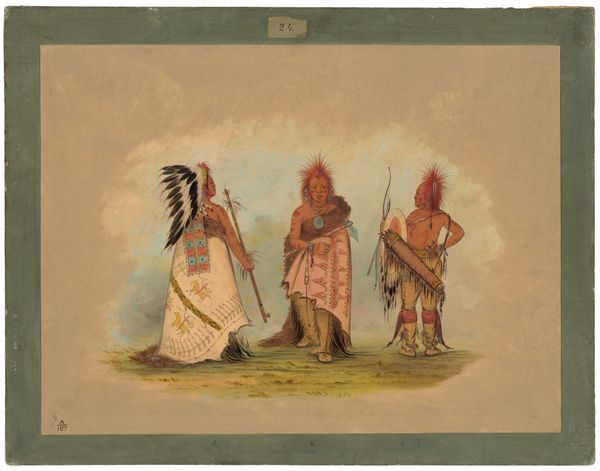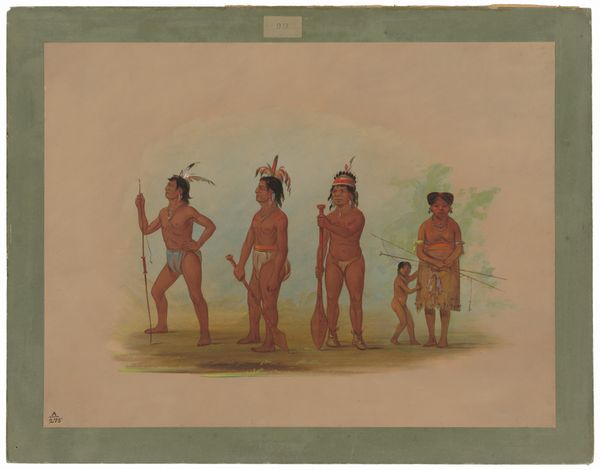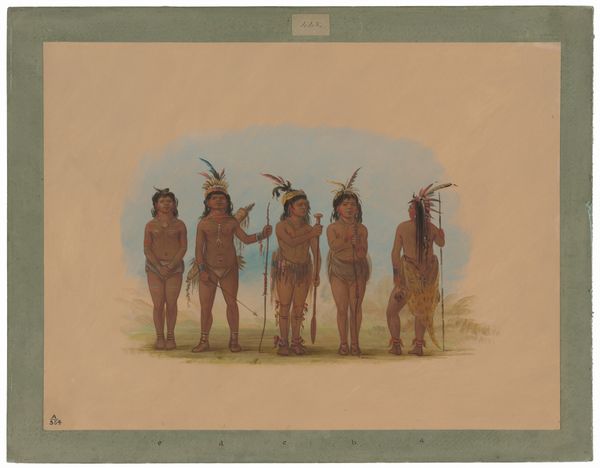
painting, gouache
#
portrait
#
water colours
#
painting
#
gouache
#
coloured pencil
#
watercolor
Dimensions: overall: 46.3 x 61.5 cm (18 1/4 x 24 3/16 in.)
Copyright: National Gallery of Art: CC0 1.0
Curator: Here we have George Catlin's "Alaeutian Chief and Two Warriors," made sometime between 1855 and 1869, executed in watercolor and colored pencil. The use of watercolor gives the image a soft, almost ethereal quality, don't you think? Editor: Absolutely. There's a stoicism about the three figures, yet also a vulnerability that comes through. The way they are adorned says a lot. The feathers worn in the hair, for example. For many Indigenous peoples, feathers carry potent symbolism representing a connection to the spirit world. Curator: Exactly, and the contrast in the men's garb! Observe the figure on the right – he's dressed in animal skins, hinting at reliance on the land for his very survival and clothing needs. While the others also adorn animalistic fringing, perhaps to denote high stature or their position within their social roles, this signals craftsmanship or the access to resources necessary for trade, for instance. Editor: That central figure especially commands attention, standing so tall and forthright, holding what appears to be a staff or spear aloft. The red accents used for the feathers and possibly paint speak volumes to honor, courage, or perhaps spiritual power inherent in their position as Chief, but also that it perhaps represents their standing, given its presentation vertically. Curator: What is also intriguing about Catlin's work is that as someone not of that community, his practice, as that of a white artist, presents challenges for how we interpret this and his wider body of work now. There is clear admiration in the work; however, how it perhaps portrays its subjects in perhaps an idealized view complicates it. These elements come to light in its overall construction through both watercolor and the controlled nature of pencil work here in portraying the figures so boldly as 'portraits.' Editor: I find the relative bareness in comparison with Catlin's full collection significant too. It feels quieter and allows for concentrated observation and appreciation for the individual stories within the broader context of representation and survival. And as you suggest, even while being a possible interpretation by another person of these cultures and peoples, we must use them for perhaps expanding a modern sense for these legacies through art in modern practices. Curator: Agreed, as an art historian I grapple with this continually in teaching. These are powerful considerations and I hope our listeners will reflect more on the implications and meanings inherent within these men of great strength in their moment. Editor: Indeed. Their imagery serves as poignant reminders of strength and heritage even in face of a problematic medium to share in our society.
Comments
No comments
Be the first to comment and join the conversation on the ultimate creative platform.
